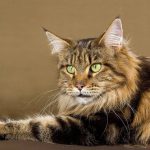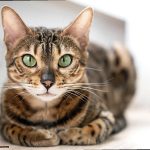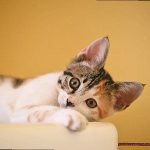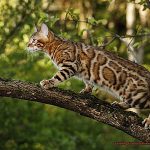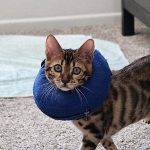Why Do Cats Close Their Eyes When They Eat?
Because cats are calm, they shut their eyes while eating. Your pet is safe and may eat without fear of being attacked by other animals. A cat will also cover its eyes while eating to protect its eyes from food particles and dirt that might harm them. Another reason a cat shuts its eyes while eating is because it is just enjoying what it is eating. Closing the eyelids might suggest that the cat enjoys the food’s taste and flavor. It’s a positive indicator that your cat is comfortable if it closes its eyes while eating. Fortunately, cats don’t need to keep their eyes open to see their meal; instead, their whiskers serve as taste senses, directing the cat to the food.
Why Do Cats Close Their Eyes When They Eat?
When cats eat, they are relaxed and close their eyes because they are enjoying their meal. This is also true when children consume their favorite foods. If the meal is appetizing and flavorful, cats are more likely to shut their eyes. To protect themselves, cats also shield their eyes while eating. With their razor-sharp teeth, wild cats tear meat off the bone, while wet food or dry kibble is unlikely to make a mess. As a consequence, bits of flesh and bone may fly into their eyes, inflicting harm and affecting their ability to function. Insects are a common problem in hotter areas. They’re lured to dead flesh and will consume it at any given occasion. To keep insects out of their eyes, cats close their eyelids. To feed on their mother, kittens, on the other hand, shut their eyes. Because they haven’t completely opened, this is the case. After 8-12 days, their eyes open properly and they begin to see.
They relax and shut their eyes when they eat because they are savoring their food. This is also true when children consume their favorite foods. If the meal is appetizing and flavorful, cats are more likely to shut their eyes. When cats eat, they also shield their eyes to keep themselves safe. Wet or dry kibble is unlikely to cause as much of a mess when wildcats rip meat off the bone with their teeth. Feces and bone shards may fly into their eyes, injuring them or hindering their ability to function. Especially in hotter regions, insects may be a major nuisance. To them, dead flesh is irresistible and they’ll seize any chance to consume it. Insects can’t get inside cats’ eyes because they’re covered. Mother cats feed their kittens with their eyes closed. A lack of complete opening has caused this. After 8-12 days, their eyes open properly and they begin to see.
How Can Cats See to Eat With Their Eyes Closed?
It’s not uncommon to see your cat feed with its eyes closed, which raises the issue of how cats perceive their dish. Cats have excellent distant vision but weak vision when observing items up close. Cats use their whiskers to let them feel and “see” the world around them at close range. When a cat shuts its eyes to feed, it can still “see” its food, but not in the same way that a person can. The hairs that come into contact with the food may function as taste buds, alerting the cat to the sort of food it’s consuming. Even blind cats can use their whiskers to seek and identify their food, and they may shut their eyelids to display satisfaction while eating.
Your cat may be unable to see its bowl if it is eating with its eyes closed, as is usual for cats to do. Cats have excellent vision at a distance, but their vision deteriorates dramatically when they are looking at anything up close. With their whiskers, cats can both “feel” and “see” the world up close. In order for a cat to eat, it must shut its eyes, yet it is still able to see its food. It’s possible that the cat’s whiskers operate as taste buds, letting it know what it’s consuming. To display their contentment, even the most sighted cats shut their eyes while feeding to reveal a contented expression on their faces.
What Other Behaviors Will a Cat Close Its Eyes?
Cats shut their eyes to exhibit comfort while they are feeding, but they also close their eyes to show comfort in other circumstances. It’s also typical to observe a cat close its eyes in a variety of scenarios, including:
Closed eyes indicate that a cat is feeling comfortable when feeding, but this isn’t the only time a cat would shut its eyes. Cats often close their eyes for a variety of reasons, including:
Stretching
Cats stretch on a regular basis to indicate to other cats that they are safe and secure. Stretching may also cause the body to produce hormones that promote relaxation and calmness. When a cat stretches, it is usual for it to shut its eyes and enjoy the sensation.
In order to let other cats know that they are safe and secure, cats will often extend their limbs. As a result, stretching may help you feel more relaxed and tranquil by releasing certain chemicals in your body. When stretching, a cat will often shut its eyes and purr contentedly.
Nap Time
When a cat is ready to go asleep, it will generally sit quietly for a few minutes, exploring its surroundings. Even if the cat isn’t entirely sleeping, it may rest by closing its eyes and listening to the sounds in the room.
When a cat is going to fall asleep, it is common for it to take a few moments to relax and observe its surroundings. Even if the cat isn’t entirely sleeping, closing its eyes and listening to the sounds in the room might help it relax.
Petting
It’s usual to see your cat close its eyes when resting on your lap, as it likes the time spent interacting with you. Cats may also purr and sigh to express their happiness and gratitude.
It’s usual to observe your cat close its eyes when it relaxes on your lap and loves spending time with you. When cats are happy and content, they may purr or sigh to express it.
Sleeping
Cats sleep with their eyes closed for comfort. Every night, cats sleep for 12-16 hours and fall asleep fast. Because they are most active at night, they sleep during the day to save energy and prepare for a night of prowling and hunting. The major reason cats cover their eyes when sleeping is to provide the privacy they need to sleep while it is still light outside.
Cats sleep with their eyes closed because it is more comfortable for them. Cats sleep for between 12 and 16 hours a night, and they fall asleep rapidly. In order to save energy and be ready for the night of prowling and hunting, they sleep during the day. As long as it’s still light outside, cats will shut their eyes to provide the privacy they need to rest peacefully.
Grooming
Cats groom themselves only when it is safe for them to do so. As a result, they don’t have to be on high alert, and they may clean while closing their eyes. Cats groom themselves to relax and soothe themselves as well as to keep their fur clean. This is a response to hazardous or embarrassing conditions, according to animal experts. This shows that the grooming technique is enjoyable, and cats close their eyes to express their delight. Cats also shut their eyelids while grooming their faces. This is for practical reasons, as it reduces the risk of their claws scratching and hurting their eyes. While cleaning, it also prevents particulates from going into their eyes.
When it is safe to do so, cats groom themselves. To avoid being too vigilant, they might clean themselves while keeping their eyes closed. Cats groom themselves for a variety of reasons, not the least of which is to relieve stress and anxiety. According to animal experts, this is a response to potentially hazardous or embarrassing circumstances. Grooming cats is a delightful experience, as shown by the cats’ shut eyelids throughout the process. Cats also shut their eyes when combing their fur. In order to protect their eyes from being scratched by their claws, this is necessary. They’re also protected from getting dust in their eyes during the cleaning process.
Conclusion
When a cat greets another cat or a human, its lengthy, languid blinks indicate love. Because in the feline world, closing one’s eyes in the presence of another is the ultimate expression of confidence. You’re signaling to your cat that you’re aware of its presence and don’t pose a danger by attentively blinking at it. After birth, kittens have a main goal and are fully dependant on their mothers for survival. They normally don’t open their eyes for another seven to ten days. Kittens grow quickly and start exploring the world outside the nest after around two weeks.
With lengthy, lazy blinks, cats show their fondness for other cats and people. Because in the feline world, closing one’s eyes while in the presence of another is the ultimate display of trust. Blinking slowly and deliberately at your cat lets it know you’re aware of its presence and aren’t a danger. The survival of a kitten is entirely dependent on its mother after delivery. After seven to ten days, they normally open their eyes. Two weeks after hatching, kittens are ready to leave the nest and explore the world around them.
